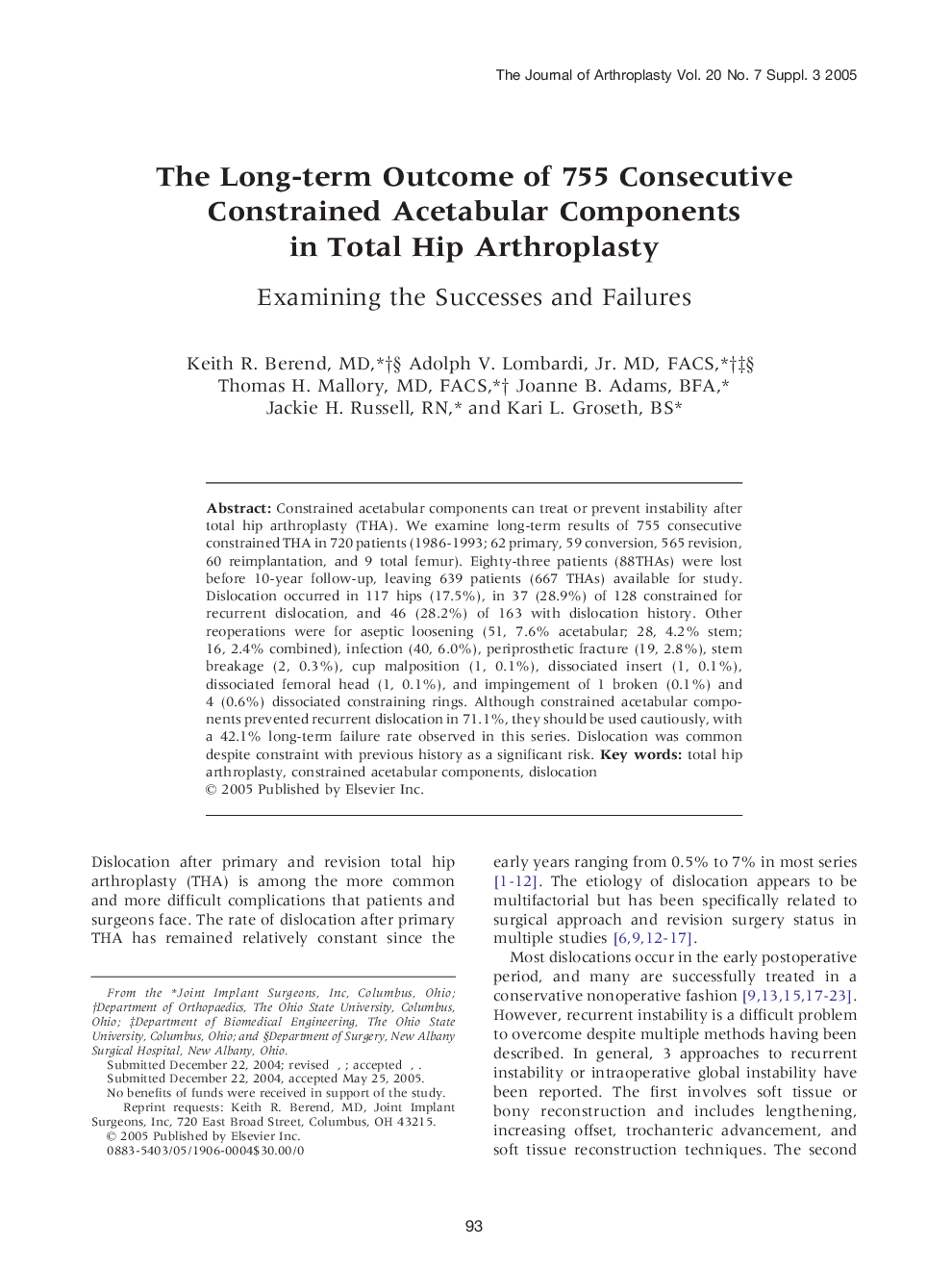| Article ID | Journal | Published Year | Pages | File Type |
|---|---|---|---|---|
| 10081937 | The Journal of Arthroplasty | 2005 | 10 Pages |
Abstract
Constrained acetabular components can treat or prevent instability after total hip arthroplasty (THA). We examine long-term results of 755 consecutive constrained THA in 720 patients (1986-1993; 62 primary, 59 conversion, 565 revision, 60 reimplantation, and 9 total femur). Eighty-three patients (88 THAs) were lost before 10-year follow-up, leaving 639 patients (667 THAs) available for study. Dislocation occurred in 117 hips (17.5%), in 37 (28.9%) of 128 constrained for recurrent dislocation, and 46 (28.2%) of 163 with dislocation history. Other reoperations were for aseptic loosening (51, 7.6% acetabular; 28, 4.2% stem; 16, 2.4% combined), infection (40, 6.0%), periprosthetic fracture (19, 2.8%), stem breakage (2, 0.3%), cup malposition (1, 0.1%), dissociated insert (1, 0.1%), dissociated femoral head (1, 0.1%), and impingement of 1 broken (0.1%) and 4 (0.6%) dissociated constraining rings. Although constrained acetabular components prevented recurrent dislocation in 71.1%, they should be used cautiously, with a 42.1% long-term failure rate observed in this series. Dislocation was common despite constraint with previous history as a significant risk.
Keywords
Related Topics
Health Sciences
Medicine and Dentistry
Orthopedics, Sports Medicine and Rehabilitation
Authors
Keith R. MD, Adolph V. MD, FACS, Thomas H. MD, FACS, Joanne B. BFA, Jackie H. RN, Kari L. BS,
